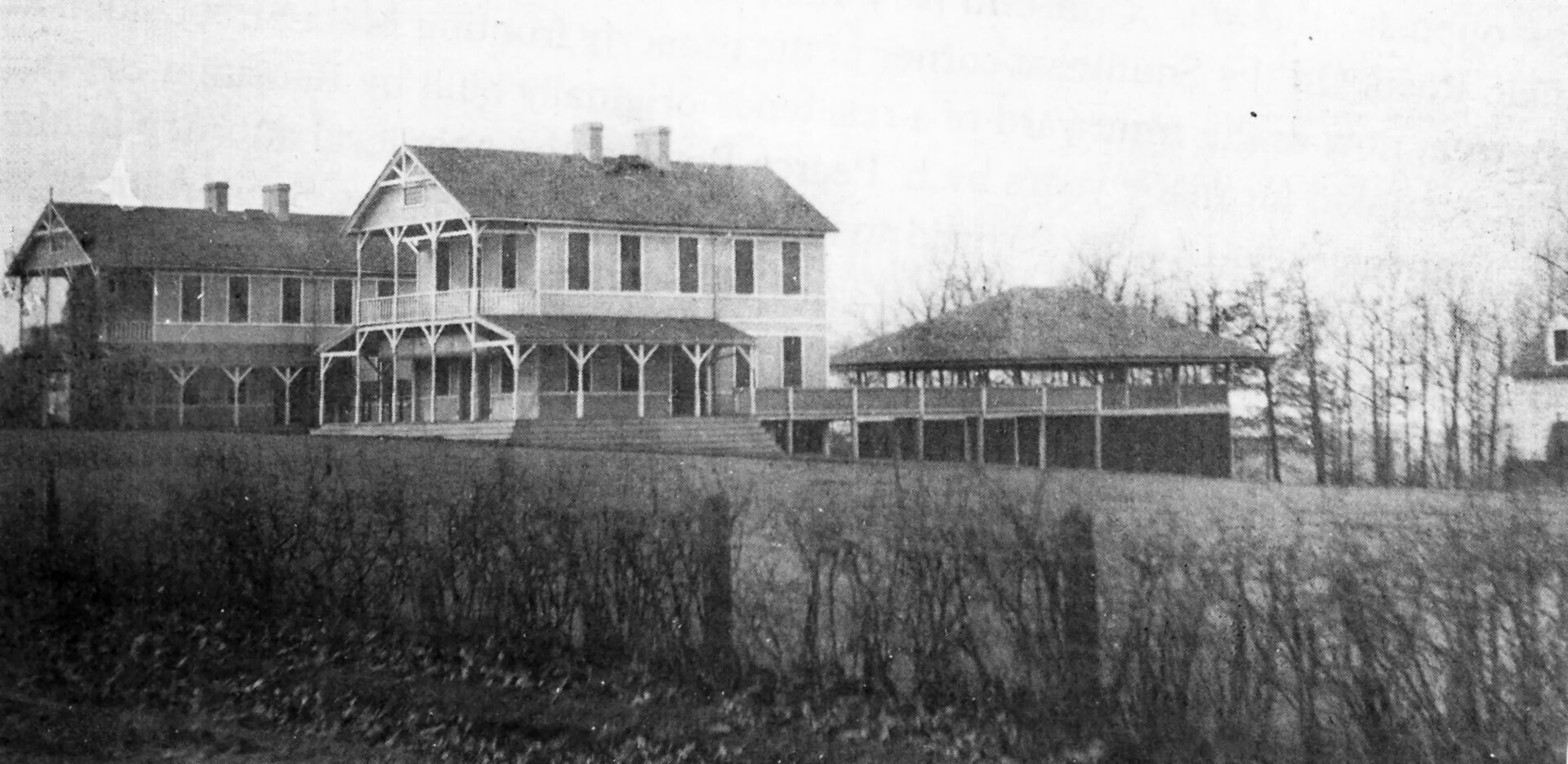Carroll Yesteryears
23 September 2007
Serving the Children
By Mary Ann Ashcraft
History sneaks up on you in strange and interesting ways. In Mt. Airy, there is a house opposite the elementary school on North Main Street which has a roof that once covered a pavilion at the long-lost Garrett Sanatorium. Study the pavilion in the photograph accompanying this article, then look for the house the next time you drive through that lovely old section of Mt. Airy.
Sitting at a high point along Parr’s Ridge, the town of Mt. Airy has always offered both residents and visitors the benefits of its cool, clean air. In the summer of 1887, Robert Garrett, then president of the B&O Railroad, bought 47 acres from several local residents for roughly $8,000 with the intention of building a sanatorium where sick, indigent children from Baltimore could escape to a healthier environment each summer. Doctors knew the children would only be exposed to additional problems if they spent the hot summer months in the city. The sanatorium was really a project of Garrett’s wife, Mary Frick Garrett, a prominent Baltimore philanthropist. She may have developed a special interest in health issues because Robert supposedly suffered from tuberculosis and became an invalid in the late 1880s.
Money was no object for the wealthy family and the sanatorium buildings sprang up very quickly. The American Sentinel of July 28, 1888 reported that the Garretts traveled to Mt. Airy in their private railroad car to inspect the facilities.
The institution was founded by Mrs. Robert Garrett two years ago. The aim has been to erect and maintain a sanitarium in a healthy locality in the country, where children between the ages of two and twelve, suffering with any acute disease not contagious, and those requiring surgical operations may receive the attention which their parents are unable to provide. No chronic cases are received. The buildings are five in number, and front on the Westminster road with a picturesque valley on the east, and the Blue Ridge mountain range on the west. The institution is admirably located on high and well drained land, eight acres in extent, at an elevation of 875 feet above the level of the sea.
Good water was important and Garrett’s deed to one of the properties specifically addressed that issue:
“And the said Robert Sellman and Elizabeth H. Sellman his wife do also grant unto the said Robert Garrett his heirs and assigns the rights and privileges to the water and free and full enjoyment and use thereof in the spring or springs on the land of the said Robert Sellman in Carroll County aforesaid and commonly known as the “Carp Pond and Springs” with the right and privilege to the said Grantee his heirs and assigns to sink such a well or wells as may be necessary and to conduct and convey the water thereout and therefrom to his own land …by means of pipes or otherwise on the land…”
While there may have been only five buildings completed by 1888, eventually there were many more that spread between Mt. Airy’s North Main Street and Buffalo Road. Two were large buildings which served as quarters for the nurses and a hospital/dormitory for the children. In addition there was a pavilion where patients could get maximum exposure to fresh air, a kitchen/dining hall, housing for those with contagious diseases, a doctor’s office, plus assorted other buildings, all connected with boardwalks.
Only patients from poor families were admitted to the Robert Garrett Hospital for Children in downtown Baltimore, also supported by Mrs. Garrett (later Mrs. Henry Jacobs). Each year at the beginning of June, between 50 and 100 children were brought from the hospital to the sanatorium where they spent the next fourteen weeks receiving the same medical care as if they had been in Baltimore, but living in a pleasant country setting. Parents were offered free train transportation so they could visit their children. Children who died while in Mt. Airy were buried in a small graveyard located on the sanatorium grounds.
In February 1923, the hospital in the city was closed, but a general dispensary for children continued in operation. The sanatorium may have operated for a few more years but was reported to be vacant by the early 1930s. There is little left to remind us of the thirty or forty years during which the Garrett Sanatorium in Mt. Airy served such a worthwhile purpose for poor children from Baltimore.
Mary Ann Ashcraft is a library volunteer at the Historical Society of Carroll County.
Photo courtesy of the Mt. Airy Historical Society

Photo caption: Seen here are the nurses’ quarters, the children’s hospital/dormitory and the pavilion associated with the Garrett Sanatorium in Mt. Airy. At the right edge of the photo is a building which served as the kitchen and dining hall.





